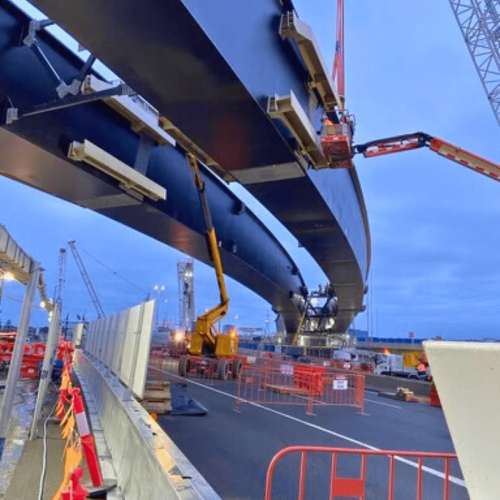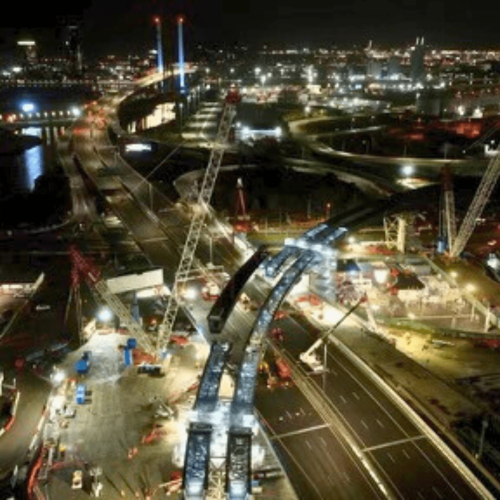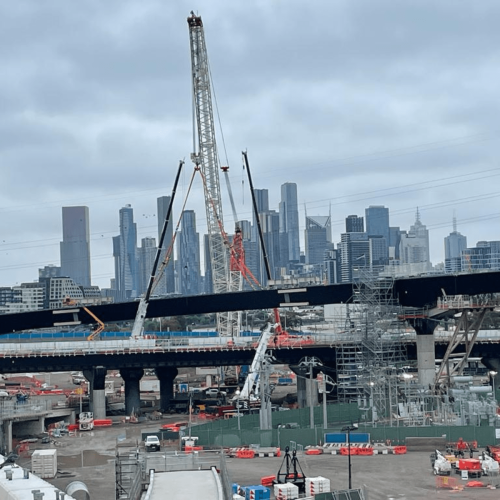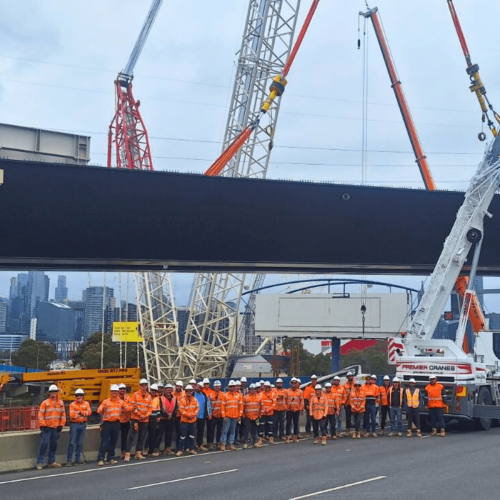Installing a crucial Component and the last section of Bridge 70 presented a significant challenge. This operation necessitated a weekend closure of a vital point in Melbourne’s transport network in the City Link near the Bolte Bridge. The Bolte Bridge spans the Yarra River and is crucial in connecting the West Gate Freeway (M1) on the west side of Melbourne to the Tullamarine Freeway (M2) on the northern side.
West Gate Tunnel – Bridge 70
This project is more than just about constructing roads; it’s about improving the quality of life in Melbourne’s west. The project includes creating twin tunnels, a second river crossing, and additional lanes on the West Gate Freeway. Its primary goal is to reduce travel time for commuters from the west, eliminate 9,000 trucks from local roads, and enhance the local environment with new parks, wetlands, and better community spaces.
Challenge:

Installing a crucial Component and the last section of Bridge 70 presented a significant challenge. This operation necessitated a weekend closure of a vital point in Melbourne’s transport network in the City Link near the Bolte Bridge. The Bolte Bridge spans the Yarra River and is crucial in connecting the West Gate Freeway (M1) on the west side of Melbourne to the Tullamarine Freeway (M2) on the northern side.
In the context of the Citylink near the Bolte Bridge in Melbourne, meticulous planning becomes imperative when facing the necessity of a weekend closure, impacting a vital point in the city’s transport network. Planning for such operations involves careful coordination of logistics, traffic management, and communication to minimise disruptions and ensure the safety of workers and the public. It requires strategic scheduling to optimise the closure period, thorough risk assessment, and contingency plans to address any unforeseen challenges.
Execution:
The APS Cranes and Rigging team played a pivotal role in this phase, showcasing exceptional skill and resilience. Continuously working throughout the weekend, the crew installed the bridge component, ensuring a seamless and safe operation. This achievement resulted from their technical expertise and unwavering commitment to safety. Planning must account for factors such as wind speed, precipitation, and temperature variations, as these can significantly impact the stability and safety of the lift. Expertise in heavy lift engineering is crucial to determining the appropriate equipment, rigging, and lifting techniques for the specific challenges posed by the bridge’s design and location.
Collaboration was essential, with Dalibor “Blur” Misura and his team ensuring a secure and efficient installation. Under John Simmonds’s leadership, the CPBJH JV heavy lift team provided critical support and guidance, demonstrating the importance of teamwork in complex projects.
Conclusion:

The successful completion of works on Bridge 70 stands as a resounding testament to the overarching objectives of the West Gate Tunnel Project and the APS teams involved. At its core, this achievement is intricately woven into the fabric of the project’s broader goals, which extend far beyond the physical structure itself. One of the primary aims is to enhance transport performance within the region, fostering efficiency and connectivity. By diversifying transport routes, the project endeavours to reduce the reliance on the West Gate Bridge, a critical artery in Melbourne’s transportation network. The milestone achieved with Bridge 70 underscores the synergy of engineering excellence, effective teamwork, and robust site leadership required to surmount multifaceted challenges. This collective effort marks a significant triumph for the project. It contributes substantially to the ongoing enhancement of Victoria’s transport infrastructure, fostering a more connected, efficient, and vibrant future for the region.
Want to learn more? Contact us now:









